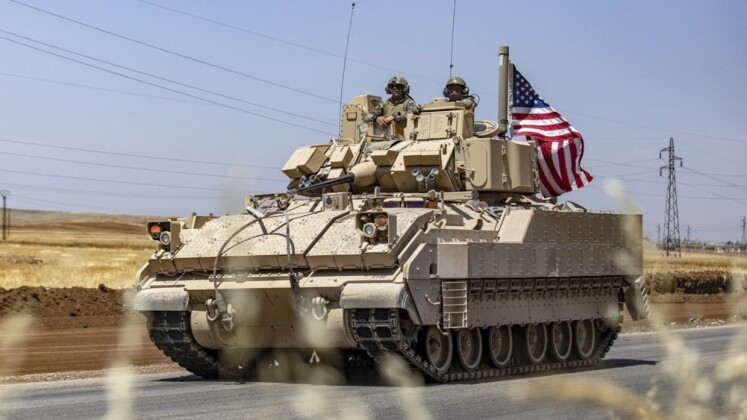An MQ-9 Reaper drone operated by U.S. or allied coalition forces in Syria made a close approach to a Russian Air Force Su-35 fighter operating over the country. The Russian Defence Ministry Centre for Reconciliation of the Opposing Parties in Syria Deputy Chief Yury Popov reported regarding the incident: “Between 10:24 a.m. and 10:29 a.m. on June 27, the coalition’s MQ-9 Reaper unmanned aerial vehicle made a dangerous approach to the Su-35 plane of the Russian Aerospace Forces above the settlement of El Suhne in the Homs governorate, at an altitude of from 7,000 to 8,000 meters. The Russian plane was performing a scheduled flight in Syrian airspace” at the time of the incident. Popov added that U.S.-led coalition aircraft violated Syrian airspace in the Al Tanf area 12 times over the past 24 hours, with these violations committed by a pair of F-16 fighters, three pairs of F-15 fighters and two pairs of A-10 attack jets. Violations of Syrian airspace by Western aircraft have been reported almost daily, and support a U.S.-led occupation of the country’s oil rich northeastern regions.
Reaper drones have been involved in multiple encounters with Russian aircraft based in Syria. In July 2023 a Reaper took damage in an encounter with a Su-35 fighter, with the U.S. Air Force Central Command reporting that on July 23 the drone had been intercepted and its propeller severely damaged after the fighter deployed flares in its path. The command subsequently posted photos which purportedly showed the damage the aircraft had taken. A Su-35 18 days prior on July 5 conducted aggressive manoeuvres near three Reapers also over Syria. Beyond Syria, a Russian Su-27, which uses the same basic highly manoeuvrable airframe design as the Su-35, conducted similar manoeuvres near a Reaper near Crimea causing it to crash.
Su-35s were first deployed to Syria in early 2016 specifically to counter potential threats from NATO aircraft to Russian counterinsurgency operations, after the Syrian government requested Moscow provide support to its forces. The fighter has since burnished its combat record with multiple arial victories over Ukraine, although its avionics and airframe materials are considered less sophisticated than those deployed by the latest Chinese and American fifth generation fighters such as the J-20 and F-35. The Su-35 is considered a ‘4++ generation’ fighter.

Alongside harassment of American drones over Syria, Su-35s have since 2016 been deployed on multiple occasions to intercept Western, Turkish and Israeli aircraft over the country, with aircraft from the latter two states very frequently providing air support to insurgents by launching air strikes on Syrian government forces. Although the large majority of Syrian territory has been restored to government control, insurgents continue to operate in enclaves near the Turkish and Iraqi borders under the protection of the Turkish and U.S. militaries respectively, with the presences of both considered illegal since they lack authorisation either from the United Nations Security Council or from Damascus operate in the country. Washington has faced significant international criticism for its extraction and sale of Syrian oil in the northeast to fund its occupation of the country’s oil rich northeastern regions, which has been widely likened by scholars of international politics and international law with pillaging – a serious war crime. Turkey has similarly illegally appropriated Syrian oil in the northwestern Idlib governate.
